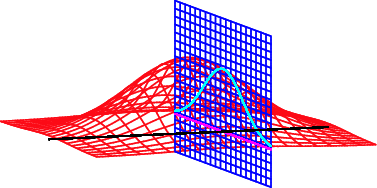

تاريخ الرياضيات

الاعداد و نظريتها

تاريخ التحليل

تار يخ الجبر

الهندسة و التبلوجي


الرياضيات في الحضارات المختلفة

العربية

اليونانية

البابلية

الصينية

المايا

المصرية

الهندية


الرياضيات المتقطعة

المنطق

اسس الرياضيات

فلسفة الرياضيات

مواضيع عامة في المنطق


الجبر

الجبر الخطي

الجبر المجرد

الجبر البولياني

مواضيع عامة في الجبر

الضبابية

نظرية المجموعات

نظرية الزمر

نظرية الحلقات والحقول

نظرية الاعداد

نظرية الفئات

حساب المتجهات

المتتاليات-المتسلسلات

المصفوفات و نظريتها

المثلثات


الهندسة

الهندسة المستوية

الهندسة غير المستوية

مواضيع عامة في الهندسة

التفاضل و التكامل


المعادلات التفاضلية و التكاملية

معادلات تفاضلية

معادلات تكاملية

مواضيع عامة في المعادلات


التحليل

التحليل العددي

التحليل العقدي

التحليل الدالي

مواضيع عامة في التحليل

التحليل الحقيقي

التبلوجيا

نظرية الالعاب

الاحتمالات و الاحصاء

نظرية التحكم

بحوث العمليات

نظرية الكم

الشفرات

الرياضيات التطبيقية

نظريات ومبرهنات


علماء الرياضيات

500AD

500-1499

1000to1499

1500to1599

1600to1649

1650to1699

1700to1749

1750to1779

1780to1799

1800to1819

1820to1829

1830to1839

1840to1849

1850to1859

1860to1864

1865to1869

1870to1874

1875to1879

1880to1884

1885to1889

1890to1894

1895to1899

1900to1904

1905to1909

1910to1914

1915to1919

1920to1924

1925to1929

1930to1939

1940to the present

علماء الرياضيات

الرياضيات في العلوم الاخرى

بحوث و اطاريح جامعية

هل تعلم

طرائق التدريس

الرياضيات العامة

نظرية البيان
Lagrange Multiplier
المؤلف:
Arfken, G
المصدر:
"Lagrange Multipliers." §17.6 in Mathematical Methods for Physicists, 3rd ed. Orlando, FL: Academic Press
الجزء والصفحة:
...
21-9-2018
2894
Lagrange Multiplier
Lagrange multipliers, also called Lagrangian multipliers (e.g., Arfken 1985, p. 945), can be used to find the extrema of a multivariate function  subject to the constraint
subject to the constraint  , where
, where  and
and  are functions with continuous first partial derivatives on the open set containing the curve
are functions with continuous first partial derivatives on the open set containing the curve  , and
, and  at any point on the curve (where
at any point on the curve (where  is the gradient).
is the gradient).

For an extremum of  to exist on
to exist on  , the gradient of
, the gradient of  must line up with the gradient of
must line up with the gradient of  . In the illustration above,
. In the illustration above,  is shown in red,
is shown in red,  in blue, and the intersection of
in blue, and the intersection of  and
and  is indicated in light blue. The gradient is a horizontal vector (i.e., it has no
is indicated in light blue. The gradient is a horizontal vector (i.e., it has no  -component) that shows the direction that the function increases; for
-component) that shows the direction that the function increases; for  it is perpendicular to the curve, which is a straight line in this case. If the two gradients are in the same direction, then one is a multiple (
it is perpendicular to the curve, which is a straight line in this case. If the two gradients are in the same direction, then one is a multiple ( ) of the other, so
) of the other, so
 |
(1) |
The two vectors are equal, so all of their components are as well, giving
 |
(2) |
for all  , ...,
, ...,  , where the constant
, where the constant  is called the Lagrange multiplier.
is called the Lagrange multiplier.
The extremum is then found by solving the  equations in
equations in  unknowns, which is done without inverting
unknowns, which is done without inverting  , which is why Lagrange multipliers can be so useful.
, which is why Lagrange multipliers can be so useful.
For multiple constraints  ,
,  , ...,
, ...,
 |
(3) |
REFERENCES:
Arfken, G. "Lagrange Multipliers." §17.6 in Mathematical Methods for Physicists, 3rd ed. Orlando, FL: Academic Press, pp. 945-950, 1985.
Lang, S. Calculus of Several Variables. Reading, MA: Addison-Wesley, p. 140, 1973.
Simmons, G. F. Differential Equations. New York: McGraw-Hill, p. 367, 1972.
Zwillinger, D. (Ed.). "Lagrange Multipliers." §5.1.8.1 in CRC Standard Mathematical Tables and Formulae, 31st Ed. Boca Raton, FL: CRC Press, pp. 389-390, 2003.
 الاكثر قراءة في التفاضل و التكامل
الاكثر قراءة في التفاضل و التكامل
 اخر الاخبار
اخر الاخبار
اخبار العتبة العباسية المقدسة

الآخبار الصحية















 قسم الشؤون الفكرية يصدر كتاباً يوثق تاريخ السدانة في العتبة العباسية المقدسة
قسم الشؤون الفكرية يصدر كتاباً يوثق تاريخ السدانة في العتبة العباسية المقدسة "المهمة".. إصدار قصصي يوثّق القصص الفائزة في مسابقة فتوى الدفاع المقدسة للقصة القصيرة
"المهمة".. إصدار قصصي يوثّق القصص الفائزة في مسابقة فتوى الدفاع المقدسة للقصة القصيرة (نوافذ).. إصدار أدبي يوثق القصص الفائزة في مسابقة الإمام العسكري (عليه السلام)
(نوافذ).. إصدار أدبي يوثق القصص الفائزة في مسابقة الإمام العسكري (عليه السلام)


















